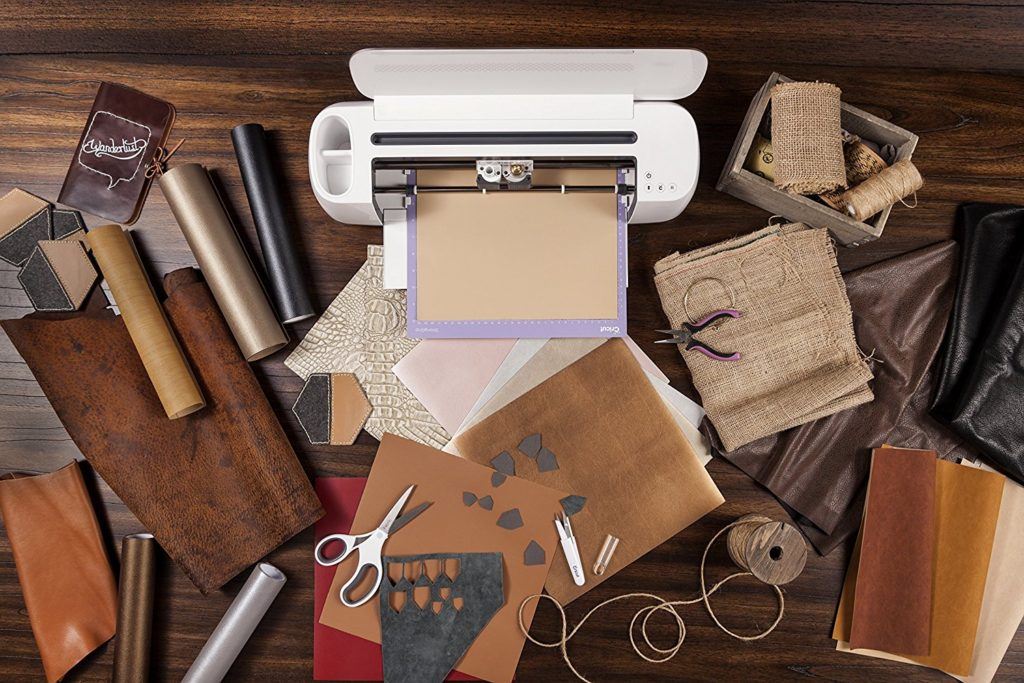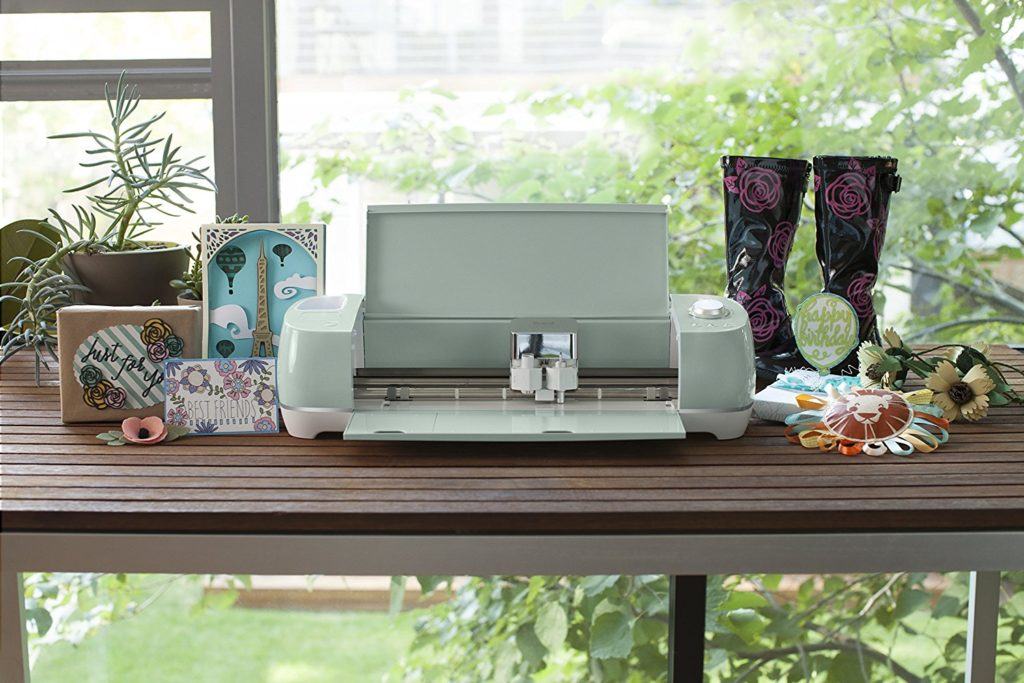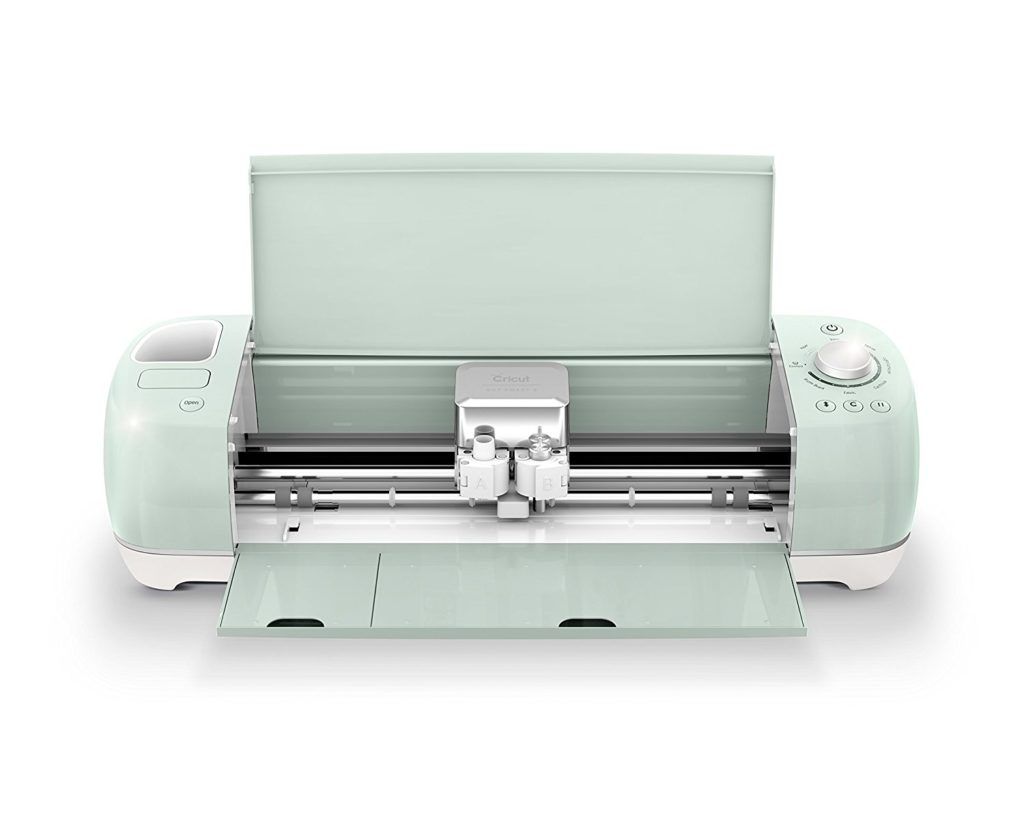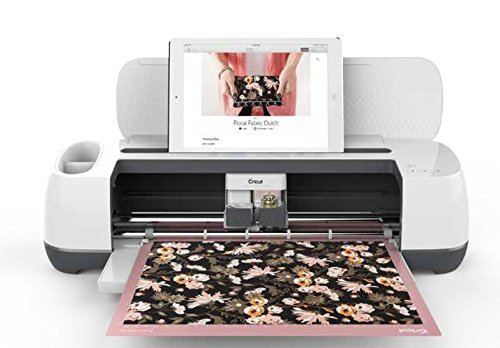When the Cricut Maker was released this Summer, one of the most popular questions we heard was, “how does it compare to the Explore Air 2?”
It’s a great question.
After all, the Cricut Explore Air 2 wasn’t released that long ago and is, by all accounts, a fantastic desktop cutting machine.
Why would anyone need the Maker?
We’ll be totally upfront: we think that both are excellent stand alone machines and we’re pretty sure you’ll be happy if you buy either of them.
Having said that, there are different pros and cons to both machines, and we think that different crafters will be more suited to either one.
We’ve broken down every battle in the war of Cricut Maker vs Explore Air 2 to help you make the choice of which is the best cutter for you.
Here’s a sneak peek at the results:
| Machine | ||
|---|---|---|
| # Materials it can work with | 300+ | 100+ |
| Access to Sewing Pattern Library? | Yes | No |
| Adaptive Tool System | Yes | No |
| Can it cut fabrics? | Yes with Rotary Blade | Only bonded fabric |
| Max. cut size | 12" x 24" | 12" x 24" |
| Software | Cricut Design Space | Cricut Design Space |
| Cutting force | 4,000 grams | 400 grams |
| Machine weight | 23.9 lbs | 14.8 lbs |
| USB charging port? | Yes | No |
| Automatic material settings? | Yes | No, Smart Set Dial |
| Works directly with physical cartridges? | Requires adapter | Yes |
| Print Then Cut | On patterned & colored paper | On white paper |
Let’s take it away with the details…
Cricut Maker vs Explore Air 2
Battle: Versatility
Which machine is the most versatile?
That’s an easy answer: the Cricut Maker wins by a landslide.
It can do everything that the Explore Air 2 can do — which is already quite a bit — and much more.
>>> 49 things you can make with the Cricut Maker
The clue is in the name: the Maker is a machine for makers.
Not only can it cut over 100 different materials, but it allows you access to a huge library of sewing patterns and has the Adaptive Tool System. This promises to work with a variety of different tools — from all the blades already released by Cricut, the brand new Rotary and Knife blades, and any new ones in the future as well.
The Rotary Blade itself, which comes included with all purchases of the Maker, is enough to elevate the machine high above the Explore Air 2.
It can cut through practically any fabric and doesn’t require any backing material.
Take a look at it in action:
While you can cut fabric with the Explore Air 2 in theory, it’s never been what the machine is best at. The fine point blade often catches on the fabric, and the material has always required backing material. We’ve always had to use a separate fabric cutter to get the best cuts.
The Maker, in contrast, is an all-in-one machine; a one-stop shop.
Winner: Cricut Maker
Battle: Cutting Specs
OK, the Maker takes the first round.
But which machine actually cuts the best? After all, that’s what you’re buying it for!
The Cricut Explore Air 2 has always been one of the best desktop cutters considering its entry level price. The premium German carbide blades cut through most materials like butter and make it the perfect choice for small, intricate designs.
But, once again, the Maker takes the crown as the best cutter around.
The blades have the same sharp precision as they do in the older machine, but this time they’ve got a hell of a lot more force behind them: a whopping 4,000 grams of force vs the Explore Air’s somewhat paltry 400 grams.
That means that cuts are neater and easier, requiring less passes on thicker materials.
It also means that the Maker can work with more materials than the Explore Air.

As another added bonus, the Maker is also able to work with some really sophisticated new blades: the Rotary blade and the Knife blade.
We’ve already covered the Rotary above and explained how it’s the revolutionary tool for fabric cutting. The Knife Blade — unfortunately not available until later in 2017 — is just as exciting, promising to be like a safer and more effective X-Acto Blade within the machine itself. It’s the perfect tool for thick materials and deep cuts.
Of course, this doesn’t take away from the respectable cutting specs of the Explore Air 2. This machine will be perfectly sufficient for crafters that stick to thin materials and don’t require any specialist intervention.
Both machines have a maximum cutting size of 12″ wide by 24″ long. We’ve said it before and we’ll say it again: we think it was a missed opportunity not to extend the Maker’s cut size to at least that of the Silhouette Cameo 3 (12″ wide by 10′ long).
Winner: Cricut Maker
Battle: Price
While it’s clear that the Cricut Maker has some serious improvements on the Explore Air 2, for some people, those new features won’t justify the price increase.
On the Cricut website, they’re advertising the Maker for $399.99 right now (September 2017). We do think that you get a lot of bang for your buck here, but there’s no doubt that that’s a significant sum to lay down on a new cutter.
Particularly when the Explore Air 2 is only around a year old…
The Explore Air 2, on the other hand, is advertised at the moment on the Cricut site for $299.99. We should add that discounts and sales are common, and you may find these machines for different prices on marketplaces like Amazon.
Regardless, if you’re on a budget, the Explore Air is a clear winner.
Winner: Explore Air 2
Battle: Longevity
Of course, price isn’t everything. Another important thing to consider is how long the machine will last.
Is this a machine for life or simply one to tide you over until the next big thing comes out?
Let’s be clear: both machines are solid, sturdy and we’ve got no doubt that they’ll be lasting for years to come.
But the Maker just inches ahead when you think about which cutter you’ll want by your side for the next few years.
Thanks to the Adaptive Tool System, Cricut have more or less guaranteed that the Maker will be a vessel for all the different blades and tools they plan to release in future.
That means that the Maker will be the perfect machine regardless of how much your crafting evolves over the next few years. It’ll grow with you.
The Explore Air, on the other hand, will offer you exactly the same in a few years as it does now. It’s certainly not obsolete, but it doesn’t have the strength and engineering behind it to support the new tools and blades that Cricut are releasing.
Of course, if you’ve got everything you need right now, then there’s no real need to upgrade. If you want to experiment and grow as a crafter, the machine that’s going to help you get there is the Maker.
Winner: Cricut Maker
Battle: Software
It’s a dead heat between the two machines when it comes down to software.
Both machines require you to use Cricut Design Space, which will either be a deal breaker or it won’t be.
Design Space is a pretty good software program for beginners. It’s straightforward to use and allows you plenty of editing options so you can really personalize your designs.
Plus there’s a huge store of ready-to-make projects and quick cuts to get you started right off the bat.

You can upload your own designs and convert them for free so if you’re a little more experienced and like to create your designs in a more sophisticated program, you have the option to do that.
Corel Draw, Adobe Illustrator, Sure Cuts A Lot and Make The Cut should be on your radar as better design programs.
Cricut Design Space is cloud-based so you can design on your phone and tablet, as well as your computer. Pretty damn cool.
But it’s definitely not a perfect program: it can be a little buggy and it’s certainly limiting if you’re creating your own designs within the program.
Winner: It’s a tie…
Battle: Sewing Projects
OK, we’ll admit it. This one isn’t really a battle, it’s a bloodbath.
Now, don’t get us wrong, we love the Explore Air 2 and it’s a plenty versatile machine in its own right. But do we ever use it for sewing projects?
Nope. Never.
The Maker, however, is the machine to use for all sewists — aside from an actual sewing machine that is!
We’ve already mentioned the huge sewing pattern library that comes with your purchase of the machine but it goes a little further than that.
Not only will the Maker cut your sewing patterns for you, it will also mark them too — with the included washable fabric marker pen. This will eliminate any of the normal guesswork you have when it comes to marking patterns and ensure that your pieces are fit together as precisely as possible.
Winner: Cricut Maker
Battle: Portability
Another important but often overlooked feature is how portable are these machines?
This will be less important if you only like to craft when sat at a desk, but if you travel with your cutting machine, or simply like to move it between rooms, it’s worth taking note.
As you might expect with it’s huge amount of extra force, the Cricut Maker is the heaviest machine, nearing 24 lbs.
The Explore Air 2 is significantly lightly, at 14.8 lbs.
Just speaking generally, it’s clear that the Maker has been designed for use at home, in a specialized craft room or space. It’s got double the amount of storage space and even space to charge your phone or tablet.
It’s a static machine that’s perfect for being used at a desktop.
If you’re looking for something a bit nimbler, the Explore Air is probably more your thing. Aside from being lighter, it has a lower amount of storage (although frankly still well endowed in this area) and will be better for people that like to craft on the road — or even take around to friends’ houses for craft night!
Winner: Explore Air 2
Battle: Ease of Use
The Cricut Maker eases ahead ever so slightly of the Explore Air 2 in the ease of use stakes — although we do think that both are very easy to master with a little practice.
The major difference here is that the Explore Air 2 comes with the Smart Set Dial on the front.

This dial allows you to quickly select from the most common materials. The machine will then automatically adjust its cut settings according to what you’ve set on the dial.
The issue that we — and plenty of other users — have with this is that the materials that you most commonly use aren’t necessarily the most common materials for the Cricut community at large. If your material isn’t on the dial then you have to set the material settings manually from within Design Space.
This isn’t especially difficult; just a little annoying. Especially when you keep having to do it over and over.
With the Maker, however, the machine will adjust its settings automatically according to what material you load in on the cutting mat.
Easy peasy — and you don’t have to do anything at all!
Winner: Cricut Maker
Battle: Cartridges
If you’re new to Cricut and the world of cutting crafts, you can ignore this section.
Long time Cricut users, however, will be very familiar with cartridges — and will probably have at least one shelf in their craft room dedicated to them!
The good news is that neither the Maker or Explore Air require you to use cartridges for your designs any more. But if you have plenty of old cartridges at home, chances are you’ll want to keep on using them.
With the Explore Air 2, you can plug in any Cricut cartridges direct into the machine itself and use them directly. Very easy.
You can still use your cartridges with the Maker, but it’s a little more difficult. You’ll need to buy the cartridge adapter separately (available from December 2017), which will allow you to link your physical cartridges into Design Space. The adapter connects your cartridges and the Maker via a USB port.
You can use digital cartridges without having the buy the adapter as these download directly into Design Space.
Winner: Explore Air 2
Battle: Print Then Cut
The final battle in the war of Maker vs Cricut Explore is: which is better for Print Then Cut?
Print Then Cut (PtC) is one of our favorite features with the Cricut machines. Essentially, it allows you to print out your design onto white paper and then, you guessed it, the machine will cut it for you!

It’s a great feature for crafters who like to experiment with new designs and go a little further than simply downloading designs from Cricut Design Space.
The PtC offering on the Maker is exactly the same as with the Explore Air 2, except that now it can PtC on patterned and colored paper!
Great news for anyone looking to jazz up their PtC projects and go the extra mile.
Winner: Cricut Maker
Maker vs Cricut Explore Air 2: Overall Verdict
Overall, it should be clear that the Cricut Maker is the better machine.
It’s more versatile, will last longer, gives better Print Then Cut functionality, is a revolutionary tool for sewers, is easier to use and is an all-round better cutter.
Hard to argue with that.
Of course, that doesn’t mean that the Explore Air 2 is a bad machine: far from it, in fact.
It’s served crafters very well for this past year and we think it will continue to be very popular in the years to come as well.
While it might not have the bells and whistles of the Maker, it’s a perfect machine for paper crafters, or people who like to work with reasonably thin materials, those that love cartridges and people on a more restricted budget.
Both are great machines.
The Maker is — you guessed it — for makers, while the Explore Air is for more dedicated cutting crafters.
Check Price of Cricut Maker Check Price of Cricut Explore Air 2Which one is your favorite?
Still can’t decide which cutter is right for you? Be sure to check out the rest of our detailed machine comparisons, as well as our complete guide to the best vinyl cutters.
Thanks for this review! have been contemplating on which cutter is the best..
I was thrilled to find this article as I have jut started exploring the differences between the Maker and the Explore Air 2!
Thank you so much for your thoughtful and decisive comparisons! It helped me a great deal! I am definitely a cutter, not a maker!
What a great and well written review. I’m looking into buying a machine and this is definitely helping me to make my decision!
When you say the Maker prints sewing patterns, do you mean shapes for Appliques? I don’t get it. What kind of patterns?